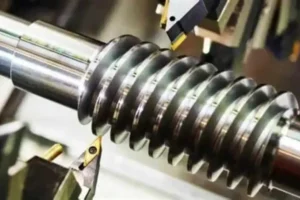When it comes to maintaining indoor comfort and energy efficiency, your HVAC system plays a central role. While most homeowners focus on temperature settings, one often-overlooked component is the fan. Understanding how long your HVAC fan should run each day can help improve air circulation, reduce energy costs, and extend the life of your system.
What Does the HVAC Fan Actually Do?
The HVAC fan is responsible for circulating air throughout your home. It pushes cooled or heated air from the system into your living spaces and helps maintain consistent temperatures. But even when the heating or cooling isn’t actively running, the fan can still operate independently to move air.
There are typically two fan settings:
Auto Mode: The fan runs only when the system is actively heating or cooling.
On Mode: The fan runs continuously, regardless of whether the system is heating or cooling.
Choosing between these modes—and deciding how many hours per day your fan should run—depends on several factors.
Factors That Influence Optimal Fan Runtime
There’s no one-size-fits-all answer, but here are key considerations that affect how long your HVAC fan should run:
1. Indoor Air Quality
Running the fan more frequently helps filter the air and distribute it evenly. If you have allergies, pets, or live in a dusty environment, longer fan runtimes can improve air quality.
2. Humidity Control
In humid climates, continuous fan operation can actually worsen indoor humidity by reintroducing moisture from the evaporator coil. In dry climates, however, it may help maintain a comfortable balance.
3. Energy Consumption
Fans consume electricity, even when the HVAC system isn’t actively heating or cooling. Running the fan 24/7 can increase your energy bill unless you have a high-efficiency motor (like an ECM).
4. Zoned Comfort
If your home has hot or cold spots, running the fan longer can help even out temperatures across rooms. This is especially useful in multi-story homes or those with inconsistent airflow.
Recommended Fan Runtime by Scenario
Here’s a breakdown of suggested daily fan runtimes based on common household needs:
| Scenario | Recommended Fan Runtime |
|———-|————————–|
| Standard home, mild climate | 4–8 hours/day (Auto mode) |
| Allergy sufferers or pet owners | 8–12 hours/day (Auto or On mode) |
| Zoned homes with uneven airflow | 12–16 hours/day (On mode during peak hours) |
| Homes with high humidity | 4–6 hours/day (Auto mode only) |
| Energy-conscious households | 2–4 hours/day (Auto mode, with smart thermostat) |
These are general guidelines. The best approach is to monitor your comfort level and energy usage, then adjust accordingly.
Tips for Managing Fan Runtime Effectively
To strike the right balance between comfort and efficiency, consider these practical tips:
Use a Smart Thermostat
Smart thermostats allow you to schedule fan runtimes based on time of day, temperature, or occupancy. Some models even learn your habits and optimize settings automatically.
Upgrade to a Variable-Speed Fan
If your HVAC system uses a single-speed fan, consider upgrading to a variable-speed or ECM motor. These fans adjust their speed based on demand, using less energy while maintaining airflow.
Clean or Replace Filters Regularly
Running the fan more often means your filters will collect more dust and debris. Check filters monthly and replace them every 1–3 months to maintain airflow and air quality.
Monitor Energy Usage
Use your utility bill or a smart energy monitor to track how fan runtime affects your electricity consumption. If costs spike, consider reducing runtime or switching to Auto mode.
Auto vs. On Mode: Which Is Better?
Here’s a quick comparison to help you decide:
| Mode | Pros | Cons |
|——|——|——|
| Auto | Energy-efficient, less wear on fan | Less consistent airflow |
| On | Better air circulation, improved filtration | Higher energy use, potential humidity issues |
For most homes, Auto mode is sufficient. However, if you’re dealing with allergies, uneven temperatures, or poor air quality, On mode for part of the day may be beneficial.
Final Thoughts: Tailor Fan Runtime to Your Home
The optimal HVAC fan runtime isn’t a fixed number—it’s a flexible strategy based on your home’s layout, climate, and comfort needs. Start with Auto mode and experiment with scheduled fan operation during peak hours. If you notice improved comfort or air quality, consider extending runtime gradually.
Ultimately, the goal is to create a healthy, comfortable indoor environment without wasting energy. With the right settings and a bit of monitoring, your HVAC fan can be a powerful tool in achieving that balance.
About the price of a 1/2 PK AC on acjakarta.com
On acjakarta.com, the price for ac ½ PK (0.5 PK) air conditioner starts from approximately Rp 2.400.000 to Rp 3.200.000, based on their 2025 price guide. ([AC Jakarta][1])
For example, in their published price list, the Daikin FTC 15 NV14, a ½ PK split-type unit, is listed at around Rp 3.900.000, while another Daikin inverter model (FTKQ 15 NV14) is priced around Rp 4.650.000. ([AC Jakarta][2])
acjakarta.com also frequently runs promotions. In one current promo, a Gree 0.5 PK standard model is offered at Rp 2.450.000, including free installation and basic installation material like 3 m of piping, bracket, insulation, and wiring. ([AC Jakarta][3])
This makes the ½ PK AC option on their site particularly attractive for small rooms, such as bedrooms or compact offices. Apart from competitive pricing, buyers also benefit from verified brand options, warranty coverage, and convenient checkout through their online platform.

